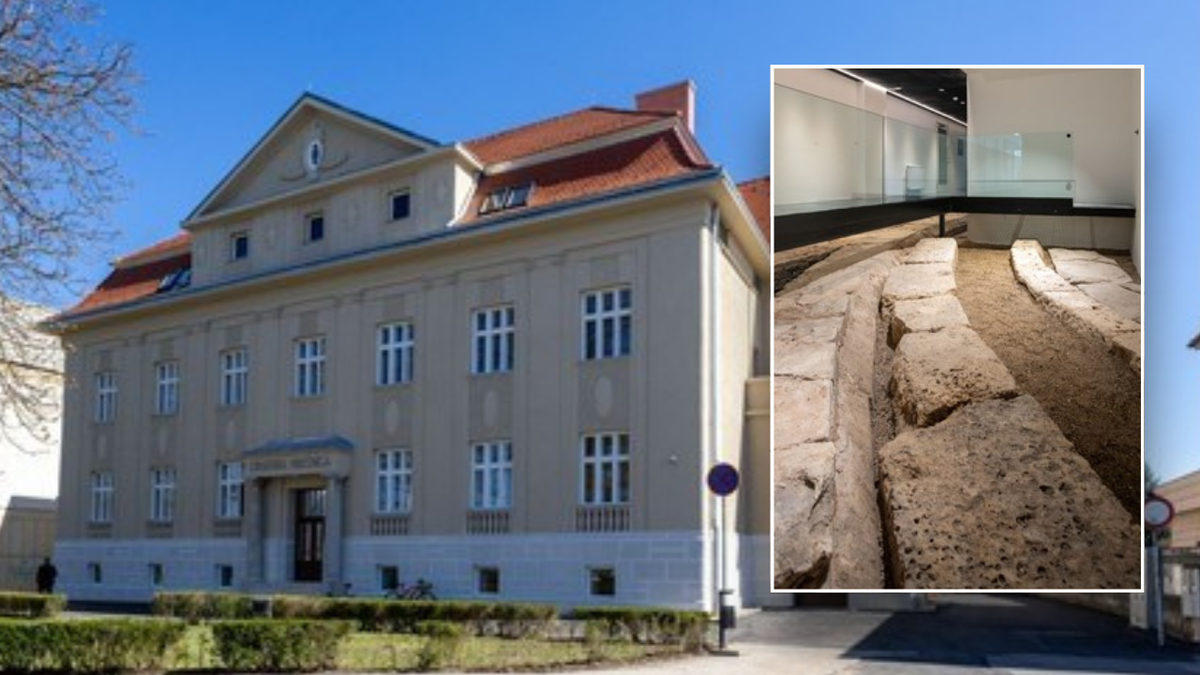
Earthquake in Croatia Unearths Ancient Roman Theater During Town Hall Renovation
A recent earthquake in Croatia inadvertently paved the way for an extraordinary archaeological discovery: the unearthing of an ancient Roman theater, or odeon, beneath the city of Sisak. Croatian Ministry of Culture and Media officials announced the significant find, which emerged during the renovation of Sisak’s town hall. The building is situated on a street aptly named Roman Street, hinting at the rich historical tapestry buried beneath the modern city.
The focal point of the discovery is the orchestra of the ancient theater, remarkably preserved in the basement of the town hall. Images released by the ministry reveal fragments of the ancient structure visible under a protective glass floor, showcasing the semicircular shape of the orchestra.
According to the ministry’s statement, translated from Croatian, the structure is apsidal, resembling a semicircular or polygonal recess. It consists of three parallel rows of stone blocks, boasting an internal diameter of twenty meters. The statement further elaborated that a monumental building with buttresses had been erected on top of the structure in later periods, necessitating additional research in the town hall courtyard to fully interpret the complex historical layers.
The story behind this discovery is intricately linked to the devastating 2020 earthquakes that struck Croatia. The town hall, a building dating back to 1914, sustained significant damage during the seismic events. This prompted a comprehensive renovation project, which ultimately led archaeologists to the remarkable Roman orchestra.
The renovation of the town hall was not merely a structural undertaking; it was also a meticulous restoration effort aimed at reviving the building’s original grandeur. The project included restoring the original coloring, meticulously recreating the design of the main entrance carpentry, and reinstating the original appearance of the main gable. The renovation teams also carefully preserved and restored all decorative elements, ensuring that the town hall’s historical character was maintained. Even the original paving in front of the entrance to the town hall was meticulously presented, further enhancing the building’s historical ambiance.
Officials have lauded the discovery as an "exceptionally valuable find," emphasizing its significance in enhancing our understanding of the ancient city of Sisak. The ministry stated that this discovery provides new insight into the size of the ancient city and further complements the interpretation of its urbanism. The unearthing of the Roman theater sheds light on the city’s past, revealing its importance as a Roman settlement and its sophisticated urban planning.
The discovery was fittingly presented within the fully renovated town hall, a symbolic gesture acknowledging the crucial role of the building’s restoration in uncovering this historical treasure. The Ministry of Culture and Media provided the funds for the town hall’s renovation, highlighting the government’s commitment to preserving Croatia’s rich cultural heritage.
The discovery in Sisak is part of a recent surge in ancient Roman finds across Europe. In Germany, archaeologists recently uncovered a massive number of horse skeletons at a military site near Stuttgart. The sheer scale of the find suggests a significant Roman military presence in the area and provides valuable insights into Roman military practices and logistics.
In March, Italian archaeologists made a fascinating discovery during the excavation of a necropolis, unearthing ancient Roman tombs. Among the tombs was one bearing the epitaph of a gladiator, offering a glimpse into the lives and deaths of these iconic figures of Roman society.
These discoveries collectively underscore the enduring legacy of the Roman Empire and the ongoing efforts to uncover and understand its rich history. From military sites in Germany to necropolises in Italy, and now an ancient theater in Croatia, archaeological finds continue to paint a more comprehensive picture of Roman civilization and its lasting impact on Europe. The discovery in Sisak serves as a reminder that beneath the modern world lie layers of history waiting to be uncovered, and that sometimes, even natural disasters can inadvertently lead to remarkable archaeological breakthroughs. The earthquake in Croatia, while destructive, inadvertently unlocked a portal to the past, revealing a treasure that will undoubtedly enrich our understanding of Roman history and the city of Sisak for generations to come. The ongoing research and interpretation of the site promise to yield further insights into the theater’s function, its role in the social and cultural life of ancient Sisak, and its place within the broader context of Roman theater architecture. The discovery is not only a testament to the enduring legacy of the Roman Empire but also a powerful symbol of the resilience of historical memory, capable of surviving centuries of change and upheaval.
